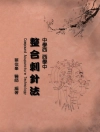Ocular toxicity is routinely assessed in toxicology studies conducted for regulatory purposes. Ocular anatomy and physiology and the assessment of ocular toxicity itself can be challenging to scientists involved in the safety assessment of pharmaceuticals, pesticides and other agents. Anatomical and physiological differences between species can impact the nature of ocular effects observed following intended or unintended exposure of ocular tissues to xenobiotics. Ocular Toxicity in Laboratory Animals provides a concise reference addressing ocular anatomy and physiology across species that will enhance the design and interpretation of toxicology studies conducted for regulatory purposes.
The book provides an overview of routine and advanced techniques that are used to assess ocular toxicity including slit lamp biomicroscopy, indirect ophthalmoscopy, electrophysiology and imaging methods for the anterior and posterior segments of the eye. Additionally, the book definesthe regulatory expectations for pharmaceuticals intended to treat ocular diseases and for other non-pharmaceutical regulated chemicals. With contributions from experts in the field, Ocular Toxicity in Laboratory Animals is an authoritative, accessible guide for toxicologists and other scientists involved in conducting toxicology studies for regulatory purposes and/or reviewing data from such studies.
विषयसूची
Comparative Ocular Anatomy in Commonly Used Laboratory Animals.- Assessment of Ocular Toxicity Potential: Basic Theory and Techniques.- Emerging Imaging Technologies for Assessing Ocular Toxicity in Laboratory Animals.- Emerging Electrophysiological Technologies for Assessing Ocular Toxicity in Laboratory Animals.- Toxicologic Pathology of the Eye: Histologic Preparation and Alterations of the Anterior Segment.- Toxicologic Pathology of the Eye: Alterations of the Lens and Posterior Segment.- Nonclinical Regulatory Aspects for Ophthalmic Drugs.- Ocular Toxicity Regulatory Considerations for Non-Drug Food and Drug.












